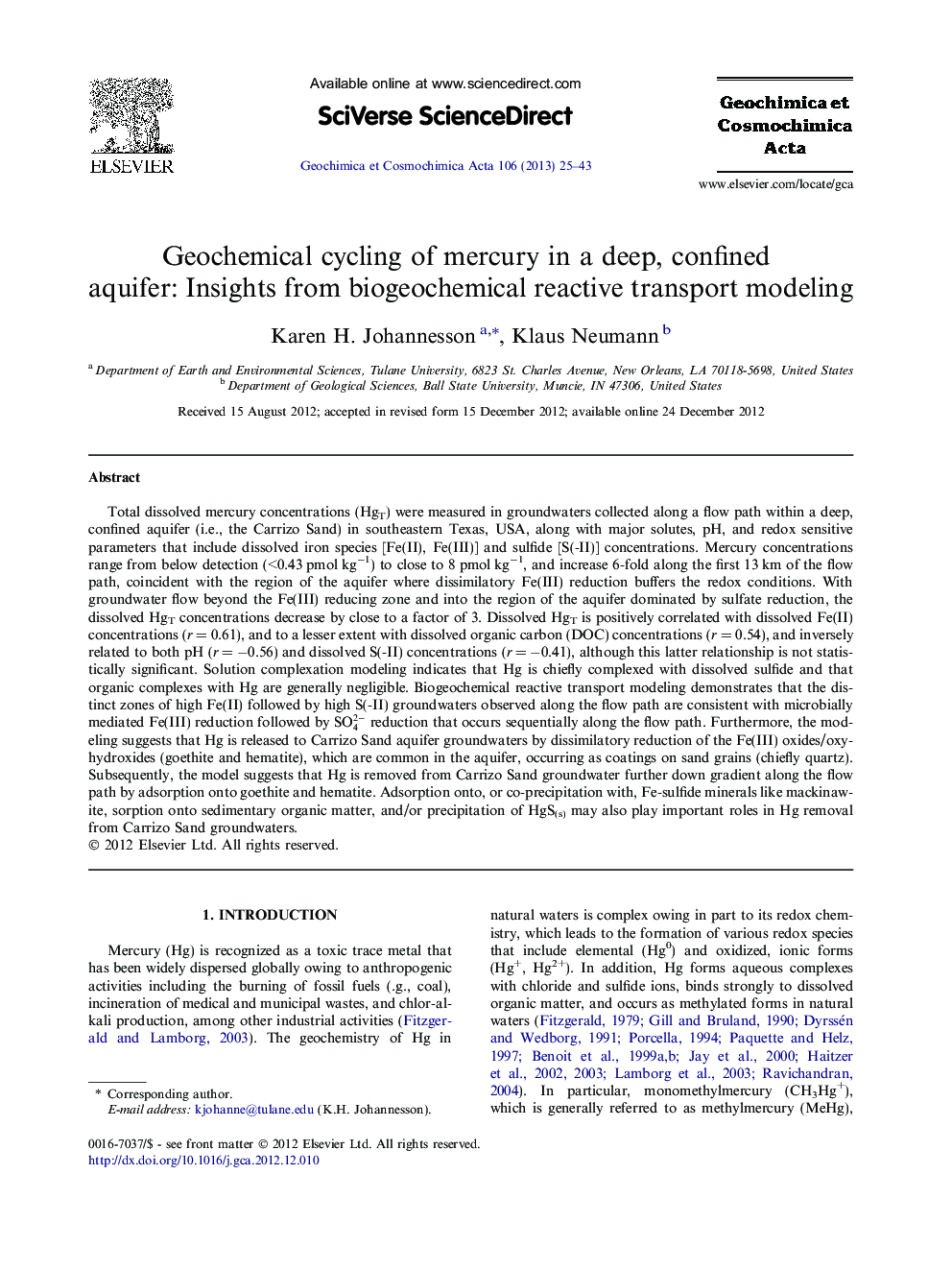| Article ID | Journal | Published Year | Pages | File Type |
|---|---|---|---|---|
| 4702394 | Geochimica et Cosmochimica Acta | 2013 | 19 Pages |
Total dissolved mercury concentrations (HgT) were measured in groundwaters collected along a flow path within a deep, confined aquifer (i.e., the Carrizo Sand) in southeastern Texas, USA, along with major solutes, pH, and redox sensitive parameters that include dissolved iron species [Fe(II), Fe(III)] and sulfide [S(-II)] concentrations. Mercury concentrations range from below detection (<0.43 pmol kg−1) to close to 8 pmol kg−1, and increase 6-fold along the first 13 km of the flow path, coincident with the region of the aquifer where dissimilatory Fe(III) reduction buffers the redox conditions. With groundwater flow beyond the Fe(III) reducing zone and into the region of the aquifer dominated by sulfate reduction, the dissolved HgT concentrations decrease by close to a factor of 3. Dissolved HgT is positively correlated with dissolved Fe(II) concentrations (r = 0.61), and to a lesser extent with dissolved organic carbon (DOC) concentrations (r = 0.54), and inversely related to both pH (r = −0.56) and dissolved S(-II) concentrations (r = −0.41), although this latter relationship is not statistically significant. Solution complexation modeling indicates that Hg is chiefly complexed with dissolved sulfide and that organic complexes with Hg are generally negligible. Biogeochemical reactive transport modeling demonstrates that the distinct zones of high Fe(II) followed by high S(-II) groundwaters observed along the flow path are consistent with microbially mediated Fe(III) reduction followed by SO42- reduction that occurs sequentially along the flow path. Furthermore, the modeling suggests that Hg is released to Carrizo Sand aquifer groundwaters by dissimilatory reduction of the Fe(III) oxides/oxyhydroxides (goethite and hematite), which are common in the aquifer, occurring as coatings on sand grains (chiefly quartz). Subsequently, the model suggests that Hg is removed from Carrizo Sand groundwater further down gradient along the flow path by adsorption onto goethite and hematite. Adsorption onto, or co-precipitation with, Fe-sulfide minerals like mackinawite, sorption onto sedimentary organic matter, and/or precipitation of HgS(s) may also play important roles in Hg removal from Carrizo Sand groundwaters.
